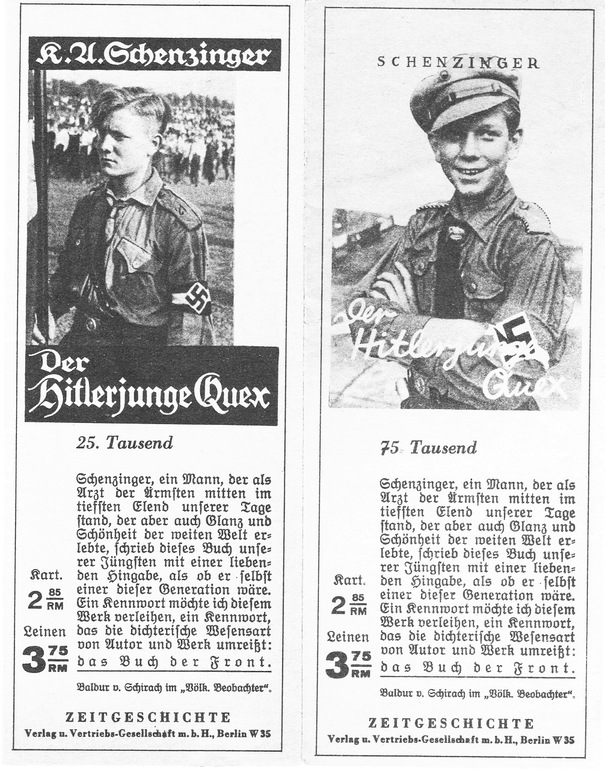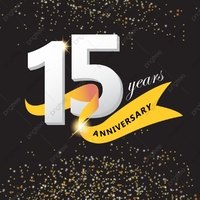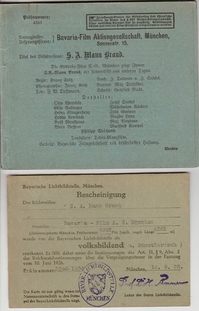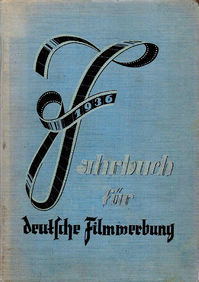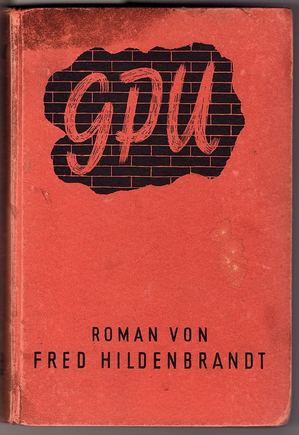" Some of our favourite things......"
Over the decades we have collected German film ephemera outside of the actual film posters shown in our Poster Gallery.
Below we present a selection of rare, unique, and some one-in-the-world items that cannot be found elsewhere, which we have in The William Gillespie Collection...
The only known film script for Karl Ritter's Legion Condor, and Werner Krauss' own annotated film script for Jud Süß;


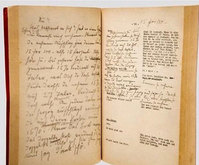
The cinema owner's guide /Werberatschlag for Hitlerjunge Quex, and the complete run of 82 issues of the Reichfilmkammer's Der Deutsche Film magazine (1936–1943).
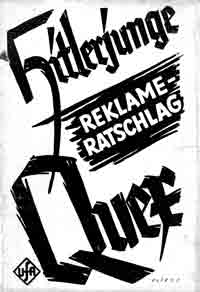
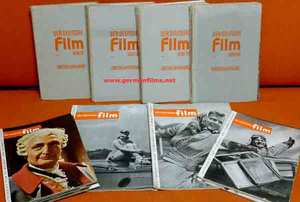
The Reich Film Censorship Office's censorship card for S.A.Mann Brand, and the 1936 Yearbook for German Film Advertising,
The Hans Steinhoff film on Friedrich the Great's youth, Der Alte und  junge König starred the great Emil Jannings as the tyrannical father to the future King. This die-cut paper helmet, styled like those worn in Prussia at the time, and as depicted in the film still at RIGHT, was issued by the Apollo Cinema in Düsseldorf as a promotional item. Ours was autographed by Jannings himself. Our Collection also has 42 original lobby cards from the film, and both the German and the French poster.
junge König starred the great Emil Jannings as the tyrannical father to the future King. This die-cut paper helmet, styled like those worn in Prussia at the time, and as depicted in the film still at RIGHT, was issued by the Apollo Cinema in Düsseldorf as a promotional item. Ours was autographed by Jannings himself. Our Collection also has 42 original lobby cards from the film, and both the German and the French poster.
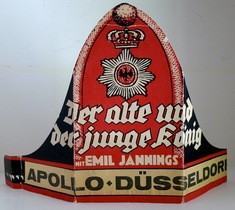
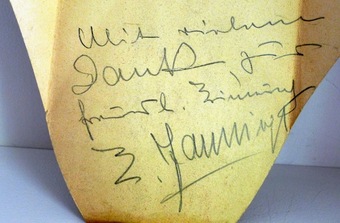
The original watercolour, by acclaimed French poster graphic artist René Peron, used for the huge 240 cm X 160 cm French Ohm Krüger outdoor film poster, and the Ufa film studio's 800 gram silver shot glass souvenir given to leading cast members of Karl Ritter's Pour le Mérite, in the original presentation box.
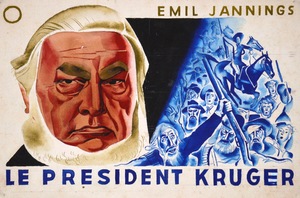
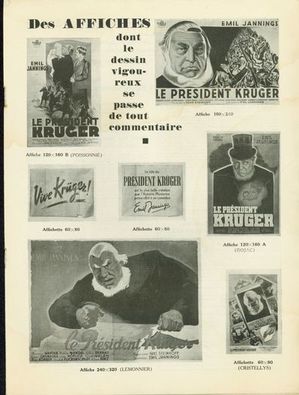
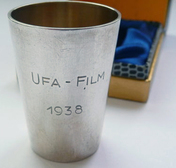

The family register book (Stammbuch) of actor Hannes Stelzer (1910–1944), whose page on this website is here. The Stammbuch registered his marriage in 1935 to Lucia Weyand, which proved the Cinegraph entry on Stelzer being married to Maria Bard at the time wrong. Stelzer's short life is written in our Ritter biography Chapter 6 – "Ritter, Hannes Stelzer and a Hero's Death."
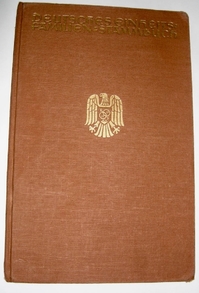
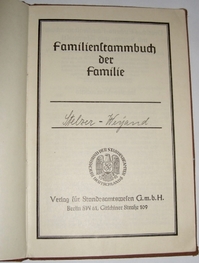
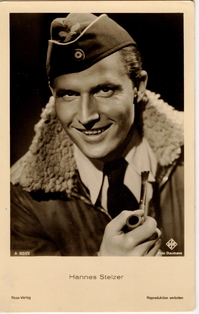
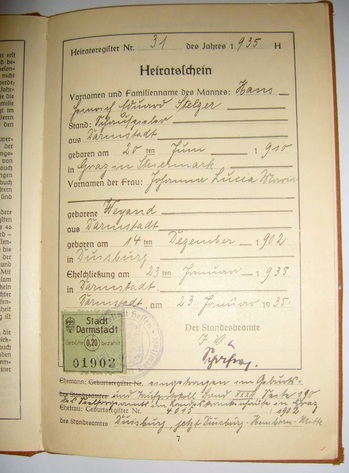
An original signed 21 page document signed by film director Veit Harlan in May 1945, entitled "Wie ich Zum Nationalsozialismus stand." ("How I felt about National Socialism" ). Sixty mimeographed copies were printed by Harlan in the dying days of WWII for critics and friends both inside the ruined Reich and overseas. Only a handful of the copies have survived, and ours is quite likely the only one in private hands. This document was the film director's first–ever attempt at explaining his and his wife's work on the Terra Filmkunst's Jud Süß.
The very scarce Ufa Filmverlag book GPU, which was a tie-in to the Karl Ritter film. This is the only copy of the book we have ever seen for sale in 30 years. It was for GPU and other anti–Soviet films which caused the USSR to demand that Ritter stand trial for "war crimes" in 1945, when he was in American captivity in Rosenheim, Bavaria. He had earlier escaped Red Army imprisonment as a POW on a forced march from Czech lands towards the Soviet Union. His 28 day and night harrowing escape across Partisan and Red Army lines is recounted in our Karl Ritter biography, using his own heretofore unpublished memoirs.
Our autographed copy of Leni Riefenstahl's Memoirs, and our complete 1943–1944 run of the Ufa film studio's Feldpost publication for employees serving in the armed forces....


An Imperial Japan postcard advertising Hans Steinhoff's Ohm Krüger.
The Japanese title for the film was "Sekai ni Tsugi" or "Telling the World".... The card is shown below, and the rough translation reads as follows:
"Having a look at incomparable inhuman tactics done by the British Army in Boer, South Africa, described in this film, we must be more determined than ever never to cease attacking the US and UK. "
"The Boer War. This was a brutal war for the purpose of ethnic cleansing. An unforgivable criminal war. Now we must look at Britain's detestable brutal acts recorded in the World War history. "
"Cinematography: Fritz Arno Wagner. Directed by Hans Steinhoff. Starring Emil Jannings. "General release: 2 Sept." "Germany. Tobis' large-scale film. Distribution in Japan by Gaikoku Eiga (Foreign Films) Co; Ltd."
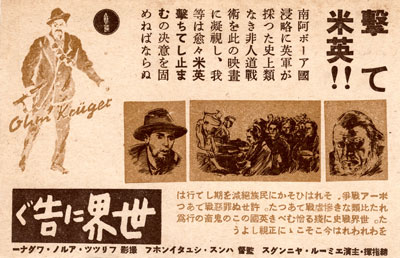
A photograph of the the WWI era Fokker 3-Decker plane built for the Karl Ritter film production of Pour le Mérite, who presented this framed and autographed photograph as a thank–you memento to the aircraft company.
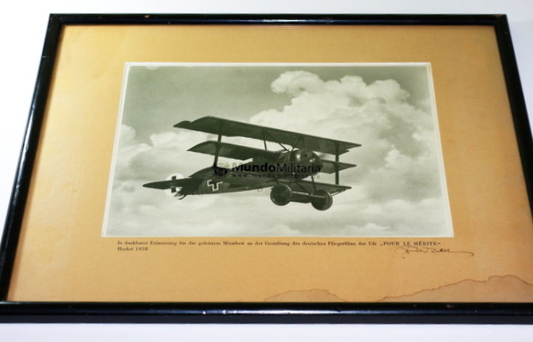

At left, below, an Ufa flower vase, manufactured by the famed Rosenthal ceramics factory in 1941, which was given as a gift to industry that had commercial cinema advertising produced for them by the Ufa studios. To the right, below, an Ufa advertisement for their advertising subsidiary, Ufa Werbefilm, which catered to industrial advertising films presented in movie theatres, short films, educational films, retail marketing films, and Agfacolor short films of various kinds.....
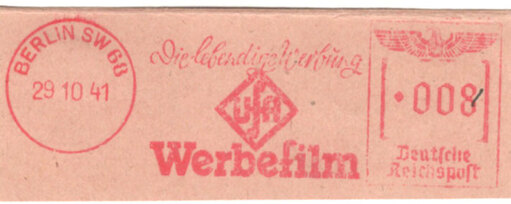
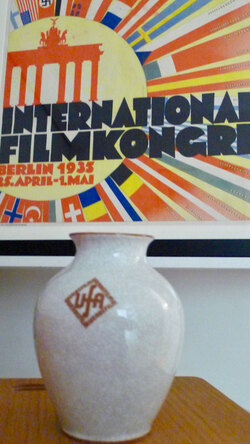
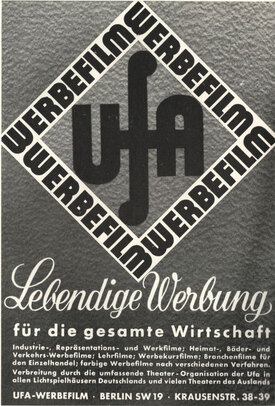
A film studio photographic postcard of Karl Ritter in the same pose as that used for the cover of the Aktuelle Filmbücher short biographical sketch of him which was published in 1938.
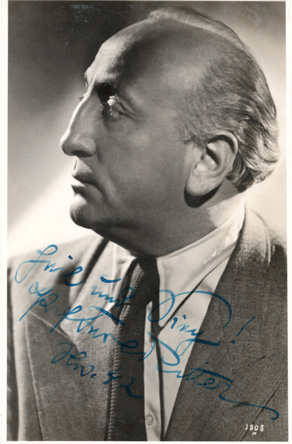
This card, which we purchased in early 2007, is autographed by him, and the inscription reads:
Heil und Sieg! Prof.Karl Ritter Nov. 42
Ritter and his Besatzung Dora film crew and actors departed Berlin for Italy on 6 November 1942, and did not return from filming there until 5 December a month later. So this card was undoubtedly signed to an admirer in the first week of November 1942 before departure. Autographs of Ritter are exceedingly rare and can sell for €600–€1,000.
Our ultra-rare car pennant for an officer of the Gaufilmstelle organisation which brought movies to the towns and villages of rural Germany and the conquered lands during WWII. This is probably the only surviving one.
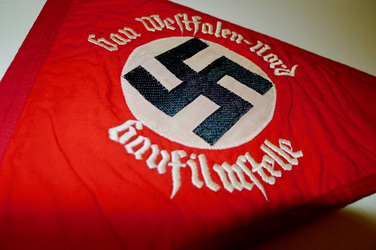
–––––––––––––––––––––––––––––––––
On 21 December 2020 we received one of the rarest items in our entire Collection -- which is really saying something. It is an original two-ring binder from the famed Reichsfilmarchiv.
 -The Reich Film Archive (RFA) was legislated into existence in 1933 but opened on 5 February 1935 as the world's first national motion picture film archive. In 1944 due to Allied terror bombing of Berlin, over 240,000 Kilos of holdings of the RFA were disbursed across the Reich in depots and salt mines, some of these locations being hundreds of miles from Berlin, in what is now present-day Poland, in Bavaria, Silesia and Salzburg. Wikipedia states bluntly: It ceased to exist in 1945, when its film stock was either destroyed or seized by the Soviet army. Today, Moscow has extensive parts of the RFA. Before the fall of the DDR, some of that war booty was returned by the Soviet Union, but after the collapse of East Germany, the remainder was held back and remains in Moscow. The German Federal Archives (Bundesarchiv–Filmarchiv) has some of the RFA materials, as well. Therefore, any original documents or holdings of the RFA are extremely scarce and not found in private collections.
-The Reich Film Archive (RFA) was legislated into existence in 1933 but opened on 5 February 1935 as the world's first national motion picture film archive. In 1944 due to Allied terror bombing of Berlin, over 240,000 Kilos of holdings of the RFA were disbursed across the Reich in depots and salt mines, some of these locations being hundreds of miles from Berlin, in what is now present-day Poland, in Bavaria, Silesia and Salzburg. Wikipedia states bluntly: It ceased to exist in 1945, when its film stock was either destroyed or seized by the Soviet army. Today, Moscow has extensive parts of the RFA. Before the fall of the DDR, some of that war booty was returned by the Soviet Union, but after the collapse of East Germany, the remainder was held back and remains in Moscow. The German Federal Archives (Bundesarchiv–Filmarchiv) has some of the RFA materials, as well. Therefore, any original documents or holdings of the RFA are extremely scarce and not found in private collections.
Our binder is one dedicated to Foreign Film released in 1942, and has a page dedicated to each feature film from the USA, France, Italy, Hungary, and Japan. It is interesting to note that all the USA films are prints with Swedish subtitles. The vast majority of all film titles are from Occupied France but some are from Unoccupied France. Here is the binder:
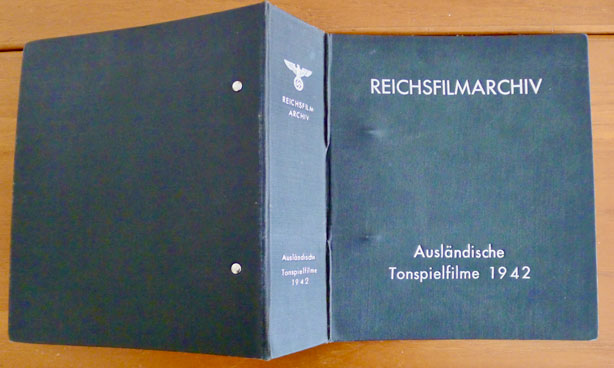
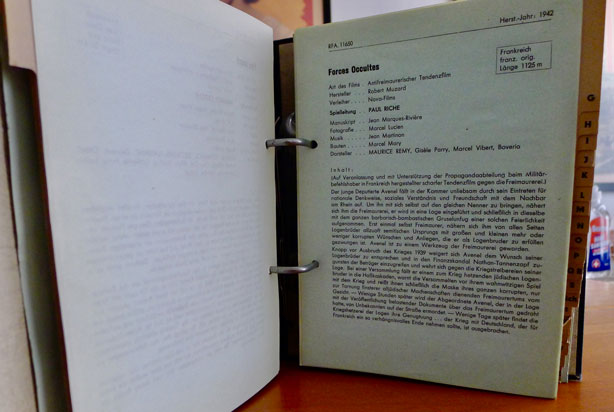
––––––––––––––––––––––––––
In the months in which we researched our new book, Hitler Youth Quex A Guide for the English–speaking Reader we were able to acquire a first edition of the novel, published in late 1932. First editions of this book are extremely rare. It is only the second one of which we are currently aware. It is not in perfect condition insofar as someone trimmed down the image of the HJ from the book's dust jacket, and mounted it on the inside of the book –– most likely after WWII..... We show below that DJ illustration and the title page of the book, followed by the print–run on the copyright page, indicating the "First to the Tenth Thousand" books.
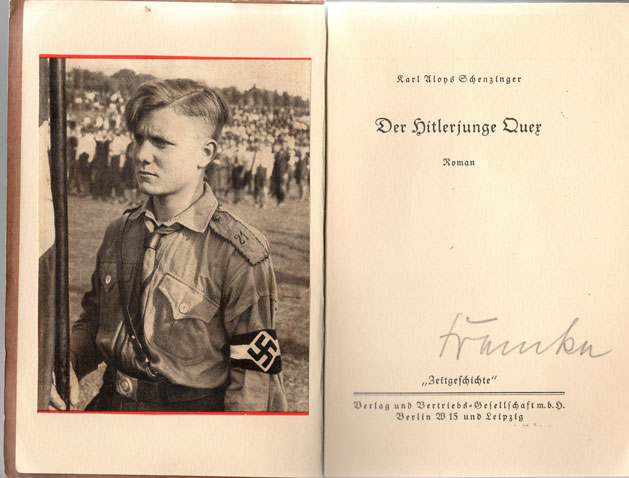

The image of the unknown HJ on this first edition of the book remained so until mid-1933, when the Ufa film was produced and a film still of Jürgen Ohlsen in his uniform replaced it. That new DJ image remained on all subsequent editions, the last of which was printed in 1942.
The "before" and "after film Dust Jackets in 1933 are shown below in the publisher's advertising for the book:
